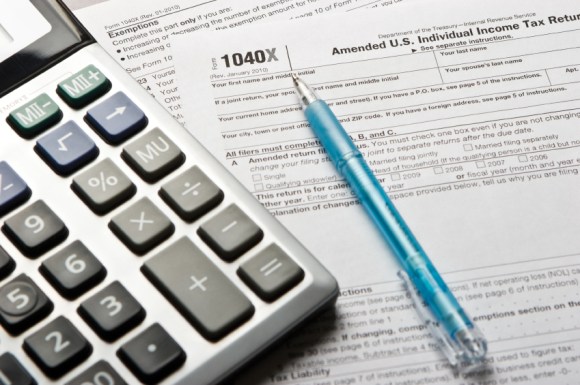A few years ago, after preparing my taxes, I realized I left off some income I earned that year. As a sole proprietor of a personal finance blog, I would receive several 1099-MISC forms each year from various vendors. A 1099-MISC is to freelancers what a W-2 is to a full time employee( a statement of income that is sent to you and filed with the IRS). I knew that since I left it off, it would only be a matter of time before the IRS checked the numbers and saw a mismatch. The solution? File an amended return.
It’s not that uncommon to forget something on your taxes considering how complicated they can be. Perhaps you didn’t record all of your deductions and credits or you entered the wrong filing status. A 1099-INT from one of your banks gets lost in the mail and delivered a few months late? If you make a major mistake, it becomes necessary to file an amended return. Here are some situations that call for filing an amended return:
- Change in filing status
- Inaccurate reporting of number of dependents
- Mistake in reporting your total income
- Error in figuring deductions and/or credits
- You e-filed, have one of the above situations, and you received confirmation from the IRS or state taxing agency that your return was accepted
There is an exception to the above rules. Let’s say you e-filed your tax return, but it’s rejected and you discover you made a mistake that usually calls for an amendment. If the return is rejected, you can fix the error without an amendment, because the IRS did not accept your return. If you missed the e-file deadline, print and paper file your corrected tax return. Also, be sure to pay attention to your state tax return. In some cases, it may be accepted although the federal tax return was rejected. If that is the case, you will need to amend your state tax return.
There is usually no need to file an amended return if you have made a calculation error. Normally, the IRS will fix these minor mistakes (this is most common with paper returns). Additionally, if you forgot to include documentation, such as a W-2 with a paper filed return, the IRS will request the documentation.
How to File an Amended Return
If you need to file an amended return, you should use Form 1040X. You can file an amended return for multiple years, but you need a separate Form 1040X for each year, and each return should be filed separately. As you fill out the form, understand that Column A should include original figures, and Column C should show the new figures. The difference between the two should be listed in Column B. If you are listing changes on various schedules, such as Schedule A or Schedule C, you will need to include them with your Form 1040X. There is no need to worry about the complicated calculations, TurboTax does the behind the scenes calculations for you when amending your return.
When you are claiming an additional refund, you should wait until your original refund arrives before you file your Form 1040X. You can cash your check, but you still should wait until your current tax return is resolved. That way, you know where you stand. In order to qualify for an additional refund, you will need to file within three years from the date of your original return, or within two years of paying your tax (whichever is later).
If your mistake resulted in under-paying your taxes, you should file your amended return as soon as you possibly can. The longer you wait to file your 1040X, the more you will pay in interest fees and penalties, if you owe. Unfortunately, there is no way to file your 1040X electronically but this may be offered sometime in the near future.
One important thing to remember when amending your tax return is to always keep a copy of your original filed tax return and create an amended tax return from an additional copy.
You can correct mistakes on your tax return with the help of an amended return; just make sure you follow proper procedures. For more information on amending your return see Amend a 2010 Tax Return.

